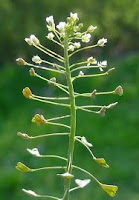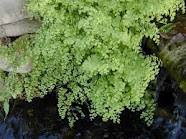COMMON KNAPWEED, CENTAUREA NIGRA
This plant has several different names depending on where you live it will be known as the Common Knapweed, the Lesser Knapweed and the Black Knapweed; but all refer to the same plant, Centaurea nigra. It looks a little like a thistle but without thorns, and grows to around 70 centimetres tall in the UK
 In Geoffrey Chaucer’s day, this plant was called Matfellon and was used with pepper to stimulate the appetite. Its flowers are edible and can be added to salads as can the flowers of the marigold, borage and violet, to name but a few.
In Geoffrey Chaucer’s day, this plant was called Matfellon and was used with pepper to stimulate the appetite. Its flowers are edible and can be added to salads as can the flowers of the marigold, borage and violet, to name but a few. In Culpeper’s day (17th century) it was used for many purposes including wound healing as this extract from his Complete Herbal shows: -
 “This Knapweed helps to stay fluxes, both of blood at the mouth or nose, or other outward parts, and those veins that are inwardly broken, or inward wounds, as also the fluxes of the belly; it stays distillation of thin and sharp humours from the head upon the stomach and lungs; it is good for those that are bruised by any fall, blows or otherwise, and is profitable for those that are bursten, and have ruptures, by drinking the decoction of the herb and roots in wine, and applying the same outwardly to the place. It is singularly good in all running sores, cancerous and fistulous, drying up of the moisture, and healing them up so gently, without sharpness; it doth the like to running sores or scabs of the head or other parts. It is of special use for the soreness of the throat, swelling of the uvula and jaws, and excellently good to stay bleeding, and heal up all green wounds.”
“This Knapweed helps to stay fluxes, both of blood at the mouth or nose, or other outward parts, and those veins that are inwardly broken, or inward wounds, as also the fluxes of the belly; it stays distillation of thin and sharp humours from the head upon the stomach and lungs; it is good for those that are bruised by any fall, blows or otherwise, and is profitable for those that are bursten, and have ruptures, by drinking the decoction of the herb and roots in wine, and applying the same outwardly to the place. It is singularly good in all running sores, cancerous and fistulous, drying up of the moisture, and healing them up so gently, without sharpness; it doth the like to running sores or scabs of the head or other parts. It is of special use for the soreness of the throat, swelling of the uvula and jaws, and excellently good to stay bleeding, and heal up all green wounds.” The Physicians of Myddfai included it in a potion for fevers along with about a dozen other herbs, and seemed not to use it alone. This is one of their remedies for the bite of a viper or adder, the only venomous snake in Britain
“For the bite of a viper. Take the round birthwort, knapweed, and field scabious; mix with water and drink.”
The plant has been used medicinally, but only the dried root and seeds are used mainly in decoctions as Culpeper mentions. This is made from one ounce of the dried seeds or root to one pint of water. You boil this mixture until the liquid is reduced by half and then strain it. The dose is apparently 75 millilitres up to three times a day.


















































